Looking to take your link building to the next level so you can rank with the big boys?
That’s where our ultimate list of advanced link building techniques comes in.
We’ve picked up and developed these techniques over a decade of building thousands of backlinks and ranking sites on Google, and we’ve earned countless powerful backlinks with every advanced strategy listed here.

In this article, we’ll dive deep into the advanced strategies that can enhance your link profile and boost your SEO performance.
These insights will empower you to connect with your target audience, cultivate relevant links, and elevate your domain authority to smash the competition.
Let’s get into it.
Key Takeaways
Our favorite advanced link building techniques for SEO are:
- Broken link building
- Competitor link analysis
- Skyscraper technique
- Resource pages
- Influencer link building
- Tiered link building (link building pyramid)
- Link reclamation
- Unlinked brand mentions
- Guest posting
- Original research and content
- Infographics
- Tool development
- Constant promotion
Now, let’s dive more deeply into each tactic.
Broken Link Building
Imagine clicking a link only to be met with the dreaded 404 error. It’s a common occurrence online.
These dead or broken links can ruin the user experience and, more importantly, affect a website’s SEO.
Here’s where broken link building comes into play:
For this strategy, you identify these broken links, typically on other sites in your niche, and then craft a piece of content that’s a fitting replacement for what the broken link used to point to.
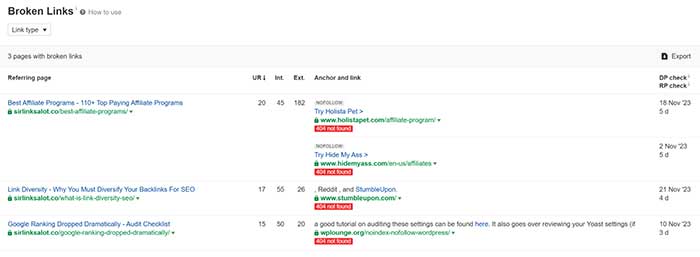
Then, it’s time to contact the webmasters or site owners responsible for those broken links.
In your outreach, you do them a solid by pointing out the broken link on their website and, in a friendly and helpful manner, suggest replacing it with a link to your freshly created content.
The beauty of this tactic is that it’s a win-win – the site owner gets a functioning, relevant link, and you earn a valuable backlink, elevating your SEO game and authority.
The downside to broken link building is that we’ve seen it become more competitive over the years, making it harder to earn links with this method.
That being said, if you’re on a budget, it’s one of the better advanced link building strategies out there.
Competitor Link Analysis
Competitor link analysis involves examining your competitors’ backlink profiles and is my favorite strategy to build links because of how simple it is.
This analysis aims to pinpoint and replicate the backlinks that are boosting your competitors to the top of the search engine rankings.
You should adopt similar tactics and acquire those same high-quality links as you have proof that it’s worked well for them.
This reverse engineering process typically unfolds in stages.
First, identify your key competitors within your industry, and then dig deep into their backlink profiles with a tool like Ahrefs.
There are cheaper tools you could use, but Ahrefs still has the best backlink data we’ve seen at this point in time, and has great filters you can apply to separate the good links from the bad.
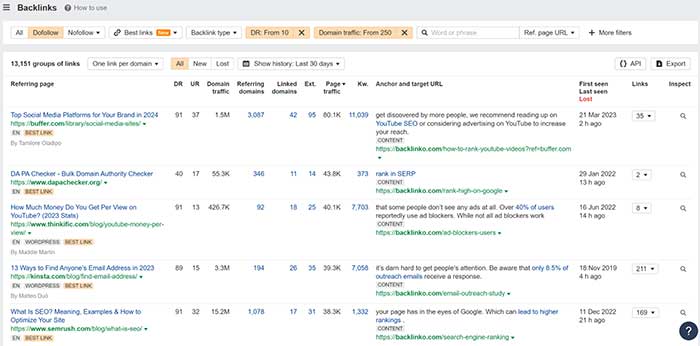
Next, it’s time for outreach and relationship-building with the prospects. You can pitch them on the fact that they’ve linked to similar content in the past and why linking to your content would make a better choice or a good addition to their article.
You could also pitch them ideas for new articles to be written, which will include a link to your content.
We love this strategy and use it on almost every link building campaign we run.
Your competitors have already saved you the time of finding sites that will link to similar content. So make good use of their hard work!
Skyscraper Link Building
The objective of this strategy is clear:
Elevate your website’s search engine rankings by creating exceptional, comprehensive content that outshines existing content in your niche.
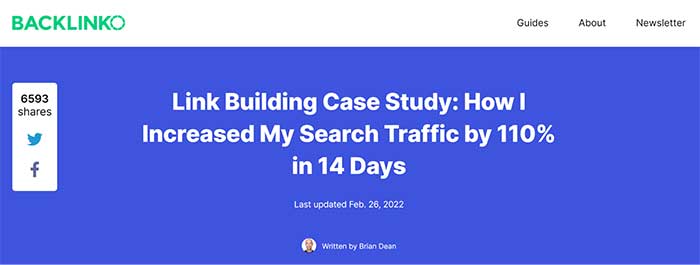
The Skyscraper technique, popularized by Brian Dean of Backlinko, has two main steps:
First, you enhance existing popular content, whether by adding fresh, up-to-date information, providing more comprehensive resources, or making it more visually appealing and easy to follow.
Second, you work on replicating the backlinks that the existing content has already garnered.
This second step incorporates the previous strategy of reverse engineering your competitors’ backlink profiles.
Use Ahrefs or a similar tool to gather all the links built to the top ten or twenty ranking articles on the same subject.

Then, reach out to them with your pitch.
Websites naturally gravitate toward linking to the best resources, and the Skyscraper Technique allows your content to rise above the rest once the linking sites see what you have to offer.
In my experience, depending on your niche, creating content at this very high level can often be pretty time-consuming.
But this strategy is still an insanely easy way to score great links, and many sites will often link to you even if your content is all that much better.
Offering them something more than just your amazing content is often the decider, whether that be money, link exchanges, etc.

Resource Page Link Building
Resource page link building is another very under-utilized link building tactic that can gain you some great backlinks very easily.
First, you discover resource pages that match your niche or industry. These are pages that link out to a variety of sites/resources in an effort to pool information for their readers.

Then, reach out to the site owners.
Don’t simply ask for a spot on their list; you present your content and why it would make a good addition to their resource page.
Ensure that it aligns with the other content of their page, and you aren’t just spamming trying to get links on random lists.
If it resonates with them and genuinely adds value, they can add your link to their list.
We’ve also had good success by looking for resource pages before having the appropriate content written.

So first, find what type of content is linked to often in resource lists in your industry, then go and create it.
By crafting content or resources that resonate with your target audience and tailoring your outreach to perfection, you can greatly enhance your chances of being featured on these resource pages.
Like in many of the other strategies mentioned here, content quality does play a role.
You can try to “brute force” this method with low-quality content, but we’ve gained significantly more backlinks in our campaigns by putting a little more effort into it.
Influencer Link Building
Influencers have substantial followings and sway, whether on social media or within specific niches.
Ever seen his handsome fella around the SEO space?
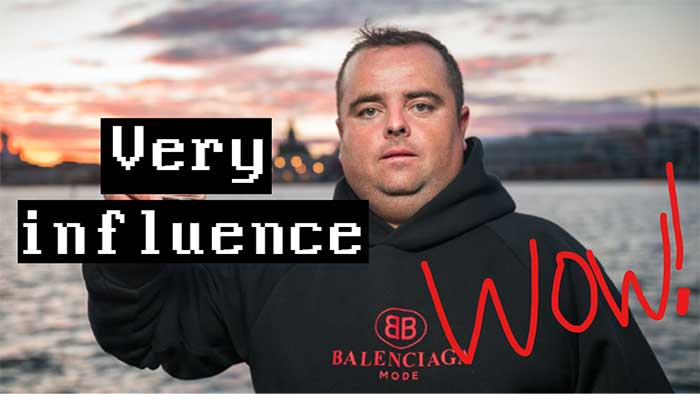
There’s an obvious benefit to partnering with them to gain backlinks and enhance your website’s visibility and authority.
Find influencers in your niche, and then reach out and propose collaborations that may involve content creation, brand mentions, or sharing your content with their followers.
In return, you’re not just gaining backlinks; you’re boosting your brand’s trust and credibility that these influencers have built by aligning yourself with them.
Their endorsement carries weight and can increase referral traffic, boost your search engine rankings, and elevate your brand’s recognition.

Depending on your niche, the top influencers might have a steep price tag unless you already have a significant brand presence.
In our experience, it can be a lot more cost-effective to start a bit lower on the influencer totem pole in the beginning.
If you have the budget, disregard that and just go straight for the top!
Create a Link Building Pyramid With Tiered Links
Creating a link pyramid (AKA tiered link building) is an advanced link building strategy that can enhance the authority and visibility of your target page while using cheaper, lower quality links.
Here’s how it works:
Tier 1: At the peak of this pyramid are the highest-quality backlinks. These are the gems you secure from authoritative and reputable sources. These top-tier links directly link to your target page.
Tier 2: The second tier of links come from lower quality sources and point to Tier 1. These links act as reinforcements, strengthening the authority of Tier 1 sources, which, in turn, benefits your target page.
Tier 3: At the base, Tier 3 links connect to the sources in Tier 2. These links might not be as high in quality, but they contribute to your overall link profile, adding a touch of natural diversity.

Note that many SEOs like to use very low-quality links for this type of link building, and you can definitely have success doing that.
However, we recommend that you tread with caution here as there is evidence that Google can check multiple tiers for spam.
Proceed according to your risk tolerance!
Generally, we don’t usually go further back than tier 2, and we use lower authority PBN and niche edits here instead of pure spam.
Link Reclamation
Link reclamation, or The Moving Man method, starts with identifying instances where your website has been linked, but those links are no longer working (i.e., dead links) or leading to irrelevant content.
To reclaim these links, you may need to update URLs, set up 301 redirects, or contact website owners to request corrections.
You can use any of the similar redirection plugins on WordPress.
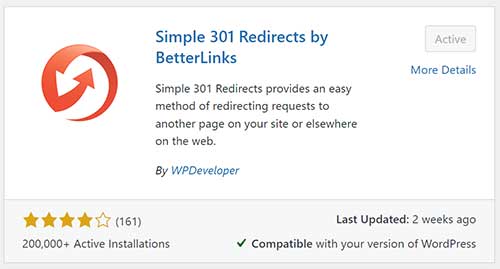
This process helps preserve your website’s link equity, making it more stable over time.
Link reclamation isn’t just about maintaining your online reputation; it enhances user experience and ensures your digital footprint remains accurate and valuable.
It’s like giving your digital presence a well-deserved tune-up.
Of course, this strategy only really works if your website has a decent amount of backlinks in the first place.
Newer sites will need to be more proactive in gaining traction initially.
Unlinked Brand Mentions
Like the last strategy, this tactic only works if you already have a decent brand presence.
If you do, gaining links this way is a piece of cake.
Unlinked brand mentions, sometimes called unlinked mentions or fresh mentions, are references to your brand, name, website, or anything connected to your brand on a webpage that doesn’t include a direct link to your website.
Tools like Ahrefs, Google Alerts, or social media monitoring tools can help you locate where your brand is being talked about without those valuable links.
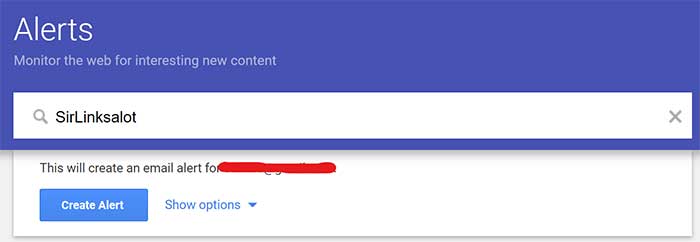
Once you’ve tracked down these unlinked mentions, it’s time to reach out. Kindly ask the content creators or website owners if they could add a link to your website to enhance their user experience.
Always frame it from how it will benefit them, not you!
This outreach process can work wonders, transforming these unlinked mentions into a valuable source of authority.
Guest Posting & Building Relationships
Guest posting involves creating and sharing articles on other websites, blogs, or online publications.
These articles should have backlinks back to your site.
Here’s what makes this strategy shine:
- Increased Exposure: Guest posting opens doors to new audiences. You get to showcase your expertise to a wider readership, all thanks to the hosting website’s existing audience.
- Traffic Generation: By delivering valuable content, you can drive traffic back to your website. Think of it as inviting guests to your home. Some may become regular visitors or even loyal customers.
- Establishing Authority: As you continue to deliver high-quality guest posts on respected websites, you start to shine as an authority in your field. Your voice becomes one that others look up to.
- Building Relationships: Guest posting is not just a one-way street; it’s an avenue for collaboration. It’s a chance to connect with fellow bloggers and influencers, share your knowledge, and learn from others.
- Link Building: Guest posts should include links back to your website. These links act like digital bridges, enhancing your website’s SEO and domain authority.
This strategy is very popular for securing links and is one of the most used in the industry.
Out of all the authority link building we do, guest posting probably accounts for about 30%, and it’s rightfully one of the top-selling services at our agency.
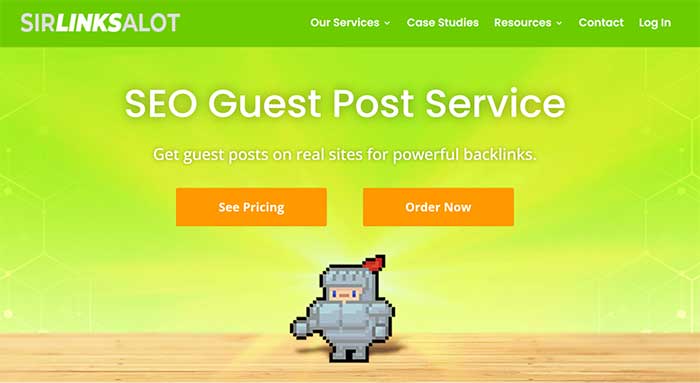
Find appropriate sites, reach out in bulk, negotiate terms, repeat.
This is a highly scalable process (tools like PitchBox help a lot) that consistently earns backlinks for any site at any stage of its journey.
Post Original Research & High-Quality Content
This method requires more work than some of the others listed here, but the quality of backlinks you can earn (as well as how many) makes it very worth it.
To employ original research, you can conduct your own studies, surveys, or experiments and then share what you’ve discovered.

Many opt to hire a PR agency for this as it requires a different skill set than most SEOs have.
It’s like bringing a fresh, unique perspective to the content table! Your insights make you a trusted figure in your field, drawing an audience hungry for what you have to offer.
Pumping high-quality content, on the other hand, is about serving content that’s informative but also engaging and practical for your readers.
Your content should be well-researched, well-presented, and go deep into the topic, providing solutions to problems.
The result? These two techniques become magnets for engagement.

Bloggers will share it, discuss it, and of course, link to it.
Provide Infographics & Resources
Creating intriguing infographics captivates your audience and imparts valuable knowledge.
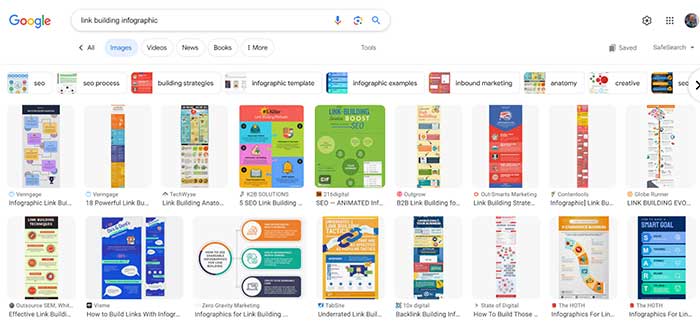
Here’s a guide to make this happen:
1. Choose a Relevant Topic: Start with selecting a topic that your audience craves. It should align with your content goals and be something they find both interesting and practical.
2. Gather Data: Deep dive into valuable data, statistics, or key insights related to your chosen topic. Ensure that your data is not only accurate but also from trusted sources. The credibility of your infographic or resource helps create original content.
3. Design with Visual Appeal: Use captivating design elements, colors, and graphics to make your creation visually irresistible. Keep the layout clean and simple; infographics should be easy to scan and comprehend.
4. Add Value: Offer unique insights, practical tips, or real solutions. Make it not just informative but also valuable. Give readers takeaways they can apply in their lives or work.
5. Share and Promote: Share your creation on your website and spread the word across your social media platforms. You can also reach out to websites or influencers in your niche to broaden your creation’s reach.
Like the previous tactic, creating an infographic is probably outside of your skillset, like it is ours. We prefer to hire for this instead of managing it in-house.
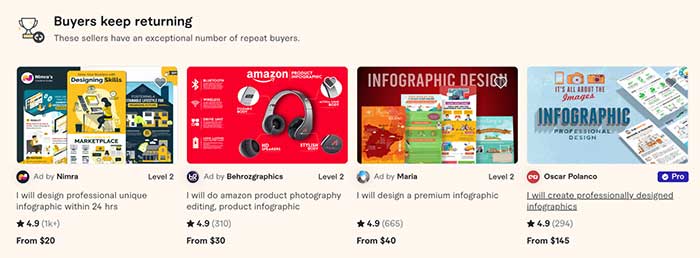
But just like unique research and content, this strategy can attract insane backlinks for quite some time.
Develop Useful Tools & Widgets
Developing useful tools and widgets enhances user experiences and adds huge value.
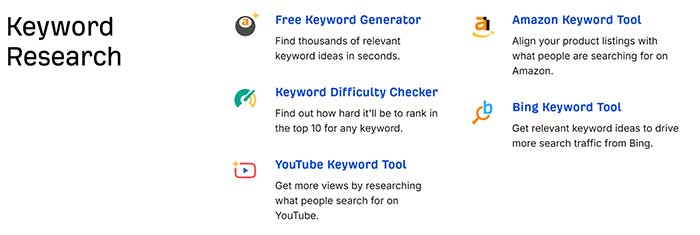
Don’t turn away just yet. ChatGPT code interpreter has made creating tools easy without a coder.
Here’s what you do:
1. Identify a Need: Identify a specific need or problem your tool or widget can solve. Consider what would make your target audience’s lives easier or more enjoyable. You can also just search for popular tools that already exist in your niche.
2. Design User-Friendly Interfaces: Craft your tool or widget with an intuitive and user-friendly interface.
3. Functionality: Ensure your creation works well enough. Do a little testing before pushing it live.
4. Mobile Responsiveness: With over 90.90% of the population owning mobile devices, your tools and widgets must be nimble and adapt to various screens, including those on smartphones and tablets.
5. Ongoing Maintenance: Regularly update and maintain your tools and widgets to keep the magic alive. Listen to your users and make improvements as needed.
We highly recommend only creating simple tools and using ChatGPT to do most of the heavy lifting here.
You can then use a WordPress plugin to inject the code onto your site.
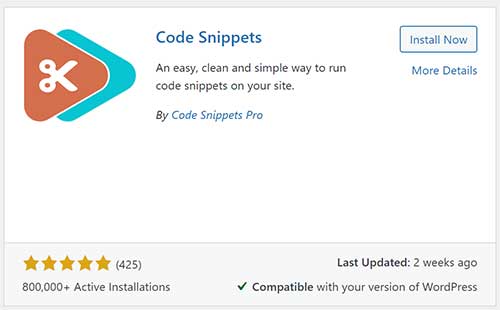
Voila! “Free” links.
Promote Your Content Constantly
Promoting your link-worthy content constantly is like growing a garden.
To make your content marketing campaign known far and wide, here are some key strategies:
1. Social Media Sharing: Your first step is to share your content across various social media platforms. Craft engaging posts, sprinkle in relevant hashtags and schedule your content to be unveiled at optimal times. This way, you can reach your intended audience when they’re most receptive.
2. Email & Digital Marketing: Leverage your email list to spread the word about your content. Dispatch newsletters that contain links to your latest articles, blog posts, or any other content offerings you’ve cultivated.
3. Collaborate with Influencers: Seek out influencers or thought leaders in your niche and join forces with them to showcase your content. Influencers can introduce your content to a wider audience as well.
Being consistent over time can create huge wins for your link building campaigns.
What to Link Building Tactics to Avoid
When using advanced link building tactics, avoid potential pitfalls that could hinder your strategy and damage your website’s SEO.

To ensure your approach is effective, here are key things to avoid:
- Low-Quality and Spammy Links: Refrain from acquiring links from low-quality or spammy websites. These links can ruin your site’s reputation and ranking. Focus on high-quality, relevant, and authoritative sources for link building.
- Over-Optimized Anchor Text: Excessive use of exact match anchor text can trigger Google’s algorithm and lead to penalties. Diversify your anchor text to make it appear more natural and less like a deliberate SEO strategy.
- Ignoring Relevancy: Links from irrelevant websites hold little value. Ensure that your target websites post content related to your niche or industry. Relevancy adds credibility to your backlink profile.
- Neglecting Content Quality: Link building should complement your content strategy. Neglecting the quality of your content can make it challenging to attract high-value backlinks. Create valuable, shareable content to draw organic links naturally.
Wrap-Up
Advanced link building strategies are vital for improving your website’s SEO and visibility, allowing you to stand apart from the masses.
By employing strategies like skyscraper link building, resource page link building, and influencer collaboration, you can enhance your online presence.
Every tactic mentioned here is a valid way to build links and boost authority.
You could even concentrate on one or two strategies that you find the most scalable for your team.
In the end, there are many ways to reach the same goal (the top of Google).
Pick which works best for you, and add in some variety from time to time to secure links from sources you haven’t been able to gain otherwise!

